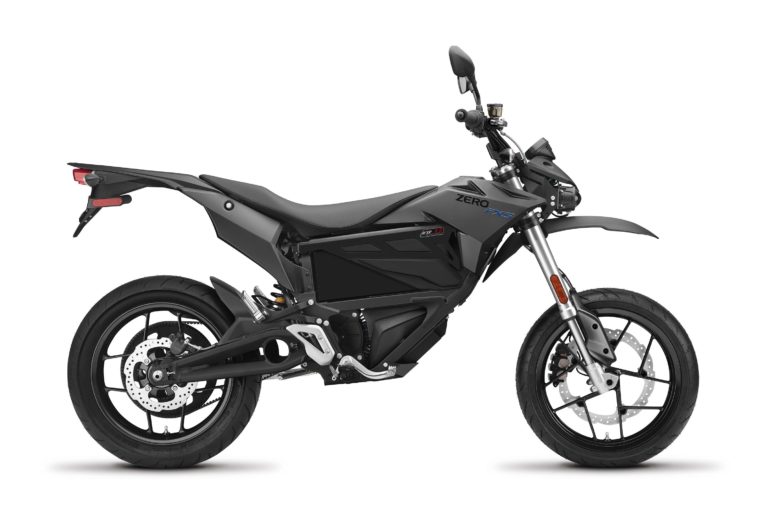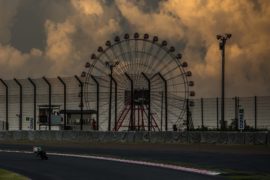I first rode a Zero back in 2009. It was a horrible machine. It was so bad, I don’t even dare call it a motorcycle – the execution on that goal was just too far off the mark to warrant calling that creation a motorcycle.
For an example of this, I remember going for a ride on an early Zero S and the on/off switch was marked in sharpie, right on the frame.
The brakes were like wooden blocks attached to the wheels, which didn’t matter much because the tires were cheap rubber from China that were absolutely useless (and terrifying) in the rain.
It wouldn’t take long to learn that Zero’s focus on lightweight components was a bad decision as well, as we would see frames on the dirt bike models collapsing when taken over any sort of jump.
The bikes from Zero were so bad, the product reviews on them could serve as a litmus test of who in the media was bought and paid for, and who was actually speaking truth to power.
These machines were objectively awful, and anyone telling you otherwise was getting paid – straight up.
I could probably go on and on about the quality issues of these early machines, but it would rob us time from discussing the constant management issues that Zero has faced in the past decade, its failed dealership and servicing model, not to mention just the general branding issue of calling your product a “Zero”.
To their credit though, the folks at Zero have improved their product with each successive iteration. The management team finally seems to be stable; Zero now uses a traditional dealership model, and isn’t wasting time sending technicians all over the country in a van; and well…the branding is still tough, but there is a new corporate logo.
Most importantly though, Zero’s motorcycles are actually now motorcycles. The quality of these machines has improved dramatically, and generally the bikes are fun to ride.
So what is keeping me from putting a Zero in my garage, and using that massive electric torque to put a grin on my face? The answer is right there above these words, in the lead photo of this story.
Zero Motorcycles has done an incredibly poor job at communicating the progress that this Californian company has achieved, and that communication starts with the company’s product.
For example, take a look at the 2009 Zero DS (below) and compare it to the 2018 Zero FXS model (above).
So much has changed from when these two bikes were created, and yet so little has changed.
Zero uses the same oddly shaped frame and swingarm architecture from over a decade ago, complete with the mystery holes that are great for stashing power cords, bags, bananas, gerbils, and other items, but make for eyesores otherwise.
The exposed battery box remains – in all of its right-angled glory – as a constant reminder that this must be an electric motorcycle, because it is truly ugly.
While no one wants to buy a motorcycle that doesn’t appeal to them, with the added cost of electric, brands need to do work that much harder to entice buyers, and they do this by creating some product lust.
The lines on the 2018 machines have certainly softened, compared to the bikes from 10 years ago, but lust is not a word that many are going to use when it comes to Zero.
Electrics don’t have to be ugly though, and they don’t have to radically depart from the motorcycling norm to stand out. The Mission R easily goes down on my list as one of the most beautiful motorcycles ever created, and was highly regarded within the industry.
The MotoCzysz line of electric race bikes had their own unique beauty, with Michael Czysz able to create a new intriguing model each successive year for the Isle of Man TT (the 2011 model is my favorite).
The Brammo Empulse RR race bike was also a unique beauty. I think it was a missed opportunity that a production version of the RR bike never came to market, and instead we got the considerably less awesome Empulse R road bike with its horrible gearbox.
A direct competitor to Zero, Alta Motors design language is a bit more conservative than the other brands I’ve mentioned, but appeals to motorcyclists with a friendly shape that is just different enough to set them apart. I wouldn’t mind seeing Alta get more radical, but I get their approach – don’t reinvent the wheel.
This is of course the trap that electric motorcycle builders fall into…time and time again.
Just because a motorcycle doesn’t use the DinoJuice™ there is this notion that we must re-invent everything else about a motorcycle’s shape…as if the last 100 years of motorcycle design hasn’t honed a form factor that suits the needs of the rider.
It is not all about design attractiveness though, and this gets me to my central point of this story. The biggest issue that Zero faces is the baggage it has created over the past 10+ years.
Failed relationships with dealers, bad experiences with riders, tumultuous interactions with the press *ahem* – all of these missteps are reinforced by continuing to use the same failed designs.
Branding 101 dictates that you change your identity when you have a crack in time – a fundamental change in your narrative, approach, direction, business model, etc.
Zero has redesigned its logo, in an attempt to rebrand itself with its consumers, but its failed to address the point of the company that consumers touch the most: its product.
No one wants to ride an updated version of the 2009 bike, no matter how good it is, because it is still an updated version of that horrible machine that was described at the top of these story.
Smart motorcycle manufacturers use the design of their motorcycles to mark shifts in technology or performance. This is the concept that drives the criticism of the design around the Ducati Panigale V4, which marks a huge departure for the Italian brand with a recycling of the design from the previous model.
If we understand the cardinal sin that Ducati performed with designing the Panigale V4, then Zero’s tally is certainly higher.
We know exactly how many motorcycles this design is selling to consumers, and the number is not overwhelming. Zero’s lineup is not profitable for the company. This business is not sustainable. Its future is finite, and everyone in Scotts Valley knows it.
So then, why does Zero continue to recycle and use this same Neal Saiki aesthetic? Why is Zero still hitching itself to a founder it ousted over seven years ago? Why didn’t Zero use that point in time to redefine itself, and why has the company missed that opportunity every year since?
Cost is probably the answer – it costs money to do a ground-up design. Risk is another answer – it is risky to make a sudden change. However, cost and risk are also the reasons why it needs to happen.
Zero’s uninspiring motorcycle design language is costing them business, and the company is risking its future by continuing to tie its product to its forgettable past.
The old joke goes something like: that the definition of insanity is doing the same thing over and over again, expecting a different result.
I will never have a Zero in my garage so long as the motorcycles remind me of those horrible rides I took in Northern California. I’m just not that insane.
Photos: Zero Motorcycle





